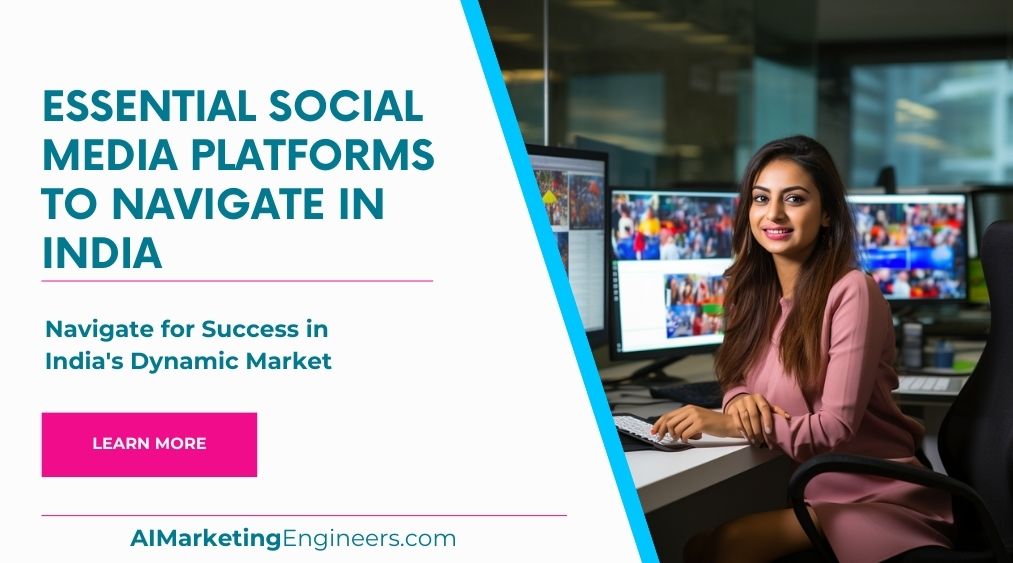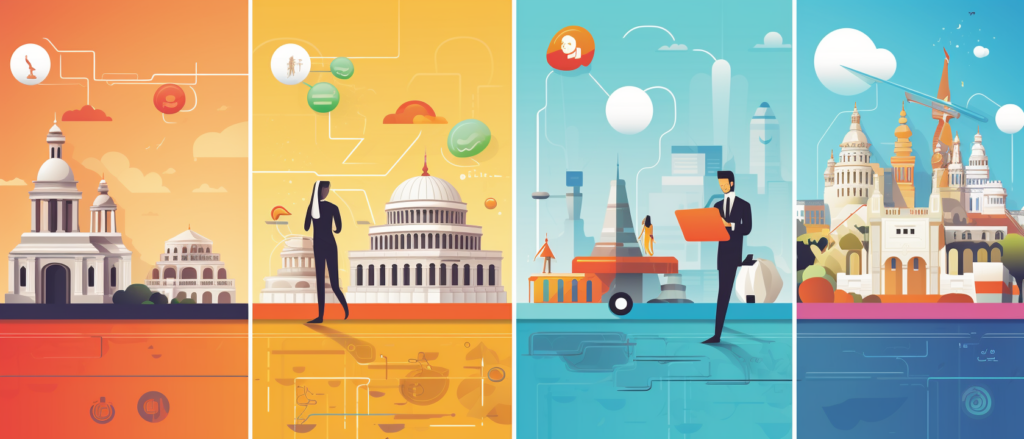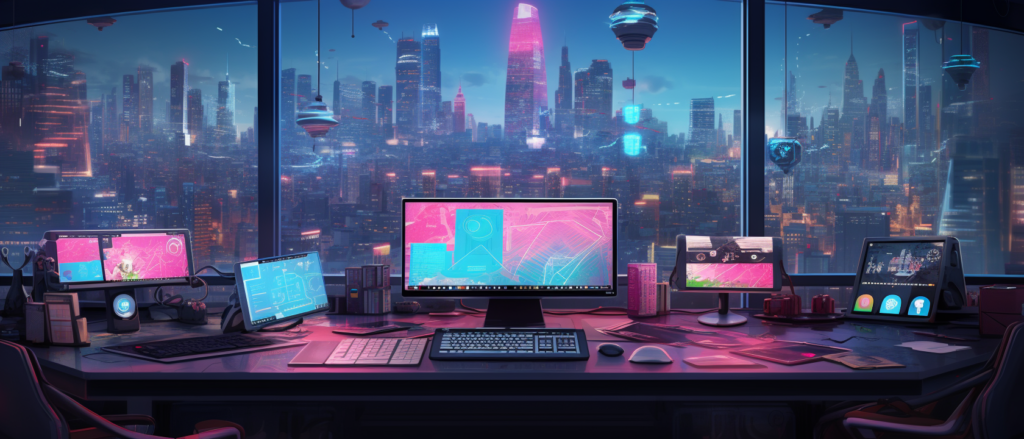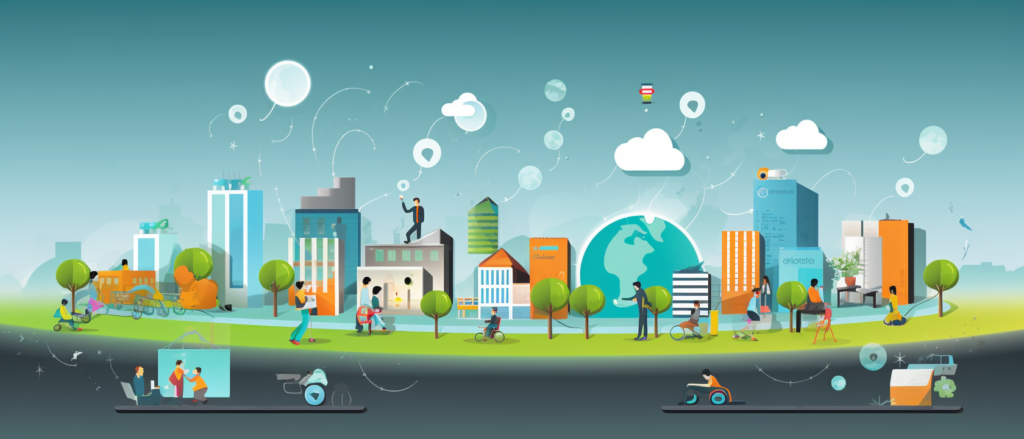Key Takeaways
✅ Diverse and Dynamic Platforms: With platforms like WhatsApp, Facebook, Instagram, YouTube, and Twitter, India's social media sphere is a vibrant mix, each with distinctive traits. It's pivotal to distinguish these differences to craft campaigns that resonate. Did you know WhatsApp leads with over 400 million users in India?
✅ Regional Languages and Localization: To effectively communicate with the Indian audience, employing regional languages is not just thoughtful, it's smart business. Platforms like ShareChat and TikTok thrive here since they embrace local tongues. Fun fact: India houses more than 19,500 dialects and languages!
✅ Influencer Marketing and User-Generated Content: Influencers and the content your fellow users create can be goldmines for fostering trust and engaging with your audience. In India, this is even more potent, with influencers from a range of segments commanding loyal followings.

Introduction
Ever wondered why certain brands become household names in India while others struggle to make a mark? It's all about mastering the peculiar beat of India's social media drum! With over a billion people, the country isn't just a market; it's a mosaic of cultures, languages, and digital habits waiting for you to explore.
In this article, we pull back the curtain on the most influential platforms across India. From Facebook's visual feast to LinkedIn's professional pulse, deciphering the code to each platform's success can catapult your business to new heights.
Curious about fresh perspectives on these digital giants or how they can turbocharge your revenue? Stick around as we elaborate on modern trends and actionable insights that might just rewrite your digital strategy playbook. Ready to embark on an eye-opening journey? Your guide to navigating India's intricate social media landscape is just ahead. Let's dive in!
Top Statistics
| Statistic | Insight |
|---|---|
| Social Media Users in India: As of January 2021, there are an estimated 448 million social media users. (Source: We Are Social) | With such a massive user base, businesses need to recognize India as a centerpiece in their social media strategy. |
| Popular Social Media Platforms: WhatsApp reigns with over 400 million active users, while Facebook and YouTube also show strong numbers. (Source: Statista) | Understanding which platforms are favored can help tailor a company's message to the right audience. |
| User Demographics: A whopping 79% of Indian social media users are aged between 18 and 34. (Source: Statista) | It's crucial to engage with this young demographic to build a brand that resonates and grows with them. |
| Industry Forecasts: Expected to grow at a CAGR of 11.6% between 2021 and 2026. (Source: Mordor Intelligence) | This predicted growth trajectory suggests that India's social media is not just buzzing—it's a booming marketplace. |
| Social Commerce Trends: 76% of consumers use social media for product research. (Source: KPMG) | With such high engagement in social shopping, businesses are finding it increasingly important to have a social shopping strategy. |
Facebook in India
With over 350 million users, Facebook reigns as the top social media platform in India. It serves as a vast town square, connecting individuals from villages, cities, and metros, regardless of age. Facebook is a melting pot where visuals like videos and photos convey powerful stories. With groups catering to every hobby and interest, and the capability for targeted advertisements, leveraging Facebook for your brand is akin to discovering a treasure map in digital marketing.
WhatsApp as a Communication Lifeline
WhatsApp connects over 400 million users across India in an intimate, conversational manner. From teens in bustling cities to grandmas in serene villages, WhatsApp is the go-to platform for staying in touch. The app has seamlessly integrated itself into daily communication, making its Business feature a direct lifeline to customers. In this personal space, a friendly and genuine approach is crucial.
Instagram's Youthful Charm
Instagram boasts over 150 million users in India, serving as a vibrant playground for the young and creative. It attracts fashionistas, foodies, and travelers who share their world through captivating visuals. Brands can achieve success by collaborating with influencers and utilizing Instagram Reels, tapping into the energetic pulse of the country's youth.
YouTube's Visual Library
YouTube, with over 450 million users in India, is a bustling market filled with storytellers captivating audiences with engaging narratives and demonstrations. From how-to guides to cinematic ventures, video content reigns supreme. Brands investing in rich video content that informs and entertains can strike gold, and exploring YouTube Shorts can provide a quick boost in audience engagement.
LinkedIn's Professional Network
LinkedIn is the digital office space for over 74 million Indians, where professionals expand networks and seize opportunities. Popular among career-driven individuals, LinkedIn is a platform for thought leadership, industry discussions, and recruiting top talent. For brands with a narrative focused on opportunity, LinkedIn serves as an effective megaphone.
Navigating the Social Media Landscape
Understanding the unique characteristics and behaviors of audiences on each platform is crucial. Tailoring your strategy to Facebook's diversity, WhatsApp’s intimacy, Instagram's visual appeal, YouTube's content-rich environment, and LinkedIn's professional focus can transform your messages into meaningful dialogues with India's dynamic social media audience.
AI Marketing Engineers Recommendation
Recommendation 1: Prioritize WhatsApp for Personalized Engagement: In India, WhatsApp boasts over 530 million users, making it the most popular messaging platform. Leverage WhatsApp Business API to automate, sort, and quickly respond to messages for customer support and personalized marketing campaigns. Incorporate rich media like images and videos to engage users, and use WhatsApp status updates similar to Stories on other platforms to keep your brand top of mind.
Recommendation 2: Tap Into the Rising Popularity of ShareChat: Embrace regional content creation on ShareChat, which caters to the local language-speaking audience of over 180 million users in India. Collaborate with local influencers to create authentic and relatable content for each regional market, tapping into trends such as short video content, and use ShareChat's analytics tools to track engagement and modify your strategy accordingly.
Recommendation 3: Use Instagram Reels for Youth Engagement: With the Indian government's ban on TikTok, Instagram Reels has filled the gap, especially among the younger demographic. Invest in creative, short-form video content on Reels to increase brand visibility and engagement. Employ tools like Instagram Insights to monitor the performance and discoverability of your content, and constantly innovate to stay relevant with the fast-paced preferences of the youth.
Relevant Links
- Unleash AI to Elevate Your Brand Strategy
- The Future of Digital Marketing: Are You Ready?
- Revolutionize Your Google Ads Campaigns with Chat GPT
- Leverage AI for Success: Top Business Growth Strategies
- The Essential Guide to the Best Marketing Books of 2024
Conclusion
Well, we've just had a whirlwind tour of India's dynamic social media platforms, haven't we? It's clear that each platform we've talked about has its own personality, its own heartbeat. Think about Facebook, with its massive, diverse community – it's like an old friend that still surprises you with new stories. Instagram, on the other hand, feels like that jazzy, full-of-life party where every moment is a photograph waiting to happen.
And then there's WhatsApp, the app that's like the town square of today's digital village, connecting everyone—and I mean everyone, from school kids sharing study notes to businesses reaching their customers. Let's not forget YouTube – the grand stage where creators of all kinds can share their vision with millions. And of course, LinkedIn, the digital handshake, connecting professionals in ways that just weren't possible before.
Navigating India's social media landscape is not just about showing up; it's about understanding where you stand amidst the chatter. It's realizing that each of these platforms is a different world, with its crowds, its customs, its secret handshakes. So, as we wrap up this journey, what's your take on all this? Which platform do you think aligns best with your story, your brand, your voice?
Whether you're a business owner trying to connect with your audience, a creative soul seeking to share your work, or simply someone trying to keep up with the times, remember this: social media in India isn't just growing; it's thriving with possibilities. So ask yourself, are you ready to dive in and make waves? Your audience is waiting. Let's turn the page and start crafting those connections.
FAQs
Question 1: What are the most popular social media platforms in India?
Answer: As of 2021, the most popular social media platforms in India are WhatsApp, Facebook, YouTube, Instagram, and Twitter, as reported by Statista.
Question 2: How can I create an effective social media strategy for India?
Answer: An effective social media strategy involves understanding your target audience, choosing the appropriate platforms, crafting engaging content, tracking and analyzing your results, and staying up to date with the latest trends and practices.
Question 3: What are the key differences between social media usage in India and other countries?
Answer: In India, the social media scene is shaped by its diverse languages, varying levels of internet access, and unique cultural nuances. WhatsApp's popularity stems from its focus on private messaging and data efficiency, while TikTok has caught on rapidly with its bite-sized videos.
Question 4: How can I optimize my social media content for Indian audiences?
Answer: To connect with Indian audiences, it's important to consider language, cultural nuances, and local trends. Utilize popular hashtags, collaborate with regional influencers, and create content that strikes a chord with your Indian followers.
Question 5: What are the legal and privacy considerations for social media in India?
Answer: Social media in India must align with the Information Technology Act, 2000, and the Information Technology (Intermediary Guidelines and Digital Media Ethics Code) Rules, 2021. Make sure your content is compliant and respects user privacy.
Question 6: How can I measure the success of my social media campaigns in India?
Answer: Track your campaign success through engagement rates, reach, impressions, and conversions. Utilize analytics tools from social media platforms and other services to gauge your campaign's performance.
Question 7: What are some advanced social media tactics for India?
Answer: Some advanced tactics include using regional languages in content, partnering with local influencers, investing in targeted ads, and exploring burgeoning platforms like TikTok and ShareChat.
Question 8: How can I stay updated with the latest social media trends in India?
Answer: Keep abreast of the latest by following industry news, joining social media groups, and closely watching analytics and trends.
Question 9: What are some common mistakes to avoid when using social media in India?
Answer: Avoid overlooking cultural sensitivities, neglecting local content optimization, failing to adhere to regulations, and not properly tracking campaign success.
Question 10: What are some practical tips for building a strong social media presence in India?
Answer: To strengthen your social media presence, maintain a consistent brand tone, engage actively with your audience, try various content formats, work with local figures, and keep up with current trends and best practices.
Academic References
- Rajneesh, S., & Sharma, P. (2018). The Rise of Social Media in India: Challenges and Opportunities. International Journal of Management. Summary: This study dives into the swelling wave of social media across India, pinpointing which platforms have swayed the masses the most. It unpacks the chances and hurdles that come with the digital territory, revealing that Facebook, WhatsApp, and YouTube are the big guns in India. What's more, it taps into the vital need to get the cultural context right when you're paddling through these online waters.
- Senthilkumar, S., & Suresh, R. (2018). Social Media Usage in India: A Comprehensive Overview. International Journal of Research in Business and Social Science. Summary: Here's a paper that takes you on a thorough tour of social media usage in India, leaving no stone unturned. The detailed breakdown covers who's online and what they're up to, with a special spotlight on the differences from one region to another. And it hones in on how social media isn't just about sharing memes; it's a potent tool that shapes what people think and even what they buy.
- Sengupta, A., & Pandey, S. K. (2018). Social Media Use in India: A Study of Trends and Patterns. International Journal of Management and Social Sciences Research. Summary: This research pulls back the curtain on India's social media scene, tracking the ebb and flow of user habits. The revelations? Smartphones are the chariots driving the social media revolution, while online platforms do more than entertain—they push for social change and have a say in the political chat buzzing across the country.
- Kumar, R. S. S., & Vijayalakshmi, P. (2014). Social Media and Politics in India: A Study of the 2014 General Elections. International Journal of Research in Social Sciences. Summary: Turn the pages of this study to see how social media played kingmaker during India's 2014 general elections. It's a tale of political parties and candidates dancing to the tune of tweets and posts, shaping public opinion, and getting voters geared up to hit the polls.
- Reddy, C., & Pandey, S. K. (2017). Social Media and Branding in India: An Empirical Study. International Journal of Management. Summary: Take a peek into the bustling world of brands and social media in India. This study leaves no doubt about the clout of platforms when it comes to wooing customers and forging brand loyalty. Brands that get cultural nuances score big, turning likes and shares into trust and rapport with their audience.












